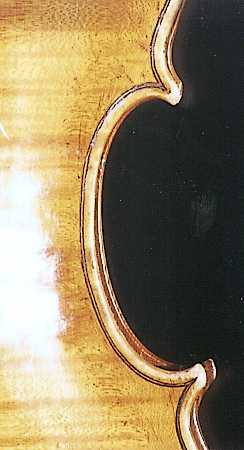The Dynasty founded by Andrea, which standardised violin making, was carried on by his sons and reached a pinnacle in the perfect form of Nicolò Amati (1596-1684). Nicolò also was responsible for educating a whole generation of outstanding violin makers, among which were Andrea Guarneri, Alessandro Gagliano, Giovanni Battista Rogeri and perhaps also Jakob Stainer. Remarkably the instruments of Nicolò Amati and Jakob Stainer remained the most coveted ones throughout the 17th and 18th Centuries. The fashion for Stradivarius arrived only towards the end of the 18th and the beginning of the 19th Century. The violin by Amati in our collection sounds singularly good. It is a great pleasure to have an instrument by this maker in the collection: one would wish for more!
The University of Hamburg has carried out dendrochronological studies (see materials in the exhibition) on the wood of this violin. Dendrochronology is the science of determining the date of the annular rings in pine or spruce, serving to establish when the tree was felled. Dr. Peter Klein and Dr. Micha Beuting have established that the rings on the top of the Amati run from 1489 until 1658, indicating that the tree was felled in or about 1659. Since the label bears the year 1669 and since violin makers usually wait a few years to let the wood dry, then it is very much believable that the violin could very well have been made in 1669 by Amati.

